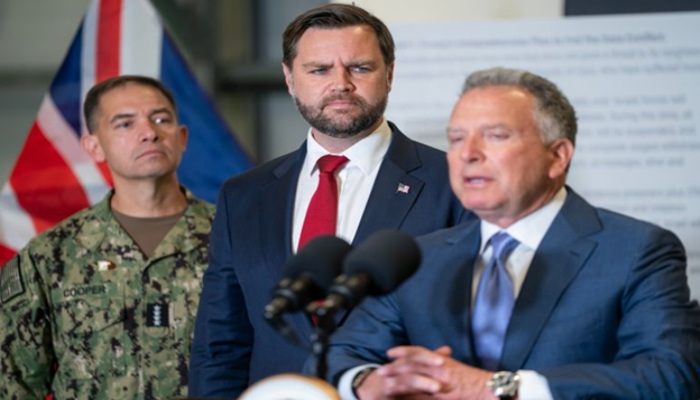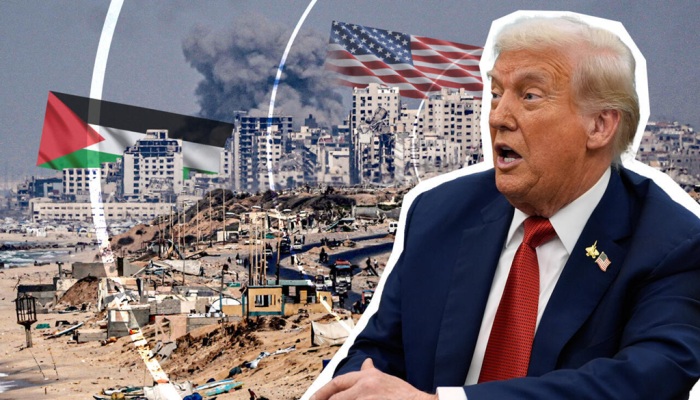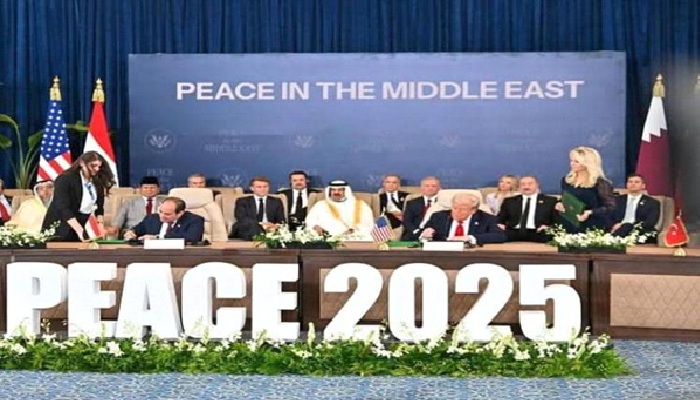
Afrasianet - Roy Schwartz - NEW YORK (Reuters) - Trump's men come to Israel with a lot to say, but they remain silent about any real future for Gaza.
These days represent a unique phenomenon: the first American march of "nannies"; they vary in qualifications and qualities, but they all share one mission: to prevent any Israeli breach or even destruction of the fragile ceasefire in Gaza.
Kushner, Vance, Rubio and Witkop have all been sent to maintain the ceasefire in Gaza, but we need to hear a concrete plan. Israel is succeeding in keeping them all occupied; within a few days, it launched a series of attacks on Gaza after two IDF soldiers were killed, resulting in dozens of Palestinian casualties. A number of ministers called for the resumption of the war, and the Knesset passed a preliminary resolution to annex the West Bank. The American reaction was one of rejection and outright rejection.
Yet the Trump administration seems more focused on maintaining the current unstable phase of the ceasefire than on making progress toward the next phase: Gaza's rehabilitation. When it comes down to it, it seems that the United States may have ambitions but no concrete plans.
It remains unclear when the proposed international governing body will actually take power, and the same is true for the particular security force — or even the identity of its soldiers. Vance said on Tuesday that the United States would not impose the formation of a foreign force on Israel. But if Benjamin Netanyahu's government continues to reject alternatives one by one — as it did with the Turkish proposal this week — what will happen next? Who will determine whether the forces Israel prefers are even interested in the mission?
The question of how long it will take to disarm Hamas is equally ambiguous. "Our hope in the administration is that ISAF will take the lead in disarming Hamas," Vance said this week. "It's going to take some time." Trump reinforced the uncertainty, saying in an interview with Fox News on Sunday that there was no "strict" timetable for disarming Hamas.
So in theory, the anonymous members of this international force that has not yet been formed could enter Gaza while Hamas militants remain in power. Will they face a governing body or an armed guerrilla movement? Others may wonder what rule will be inflicted on ordinary Palestinians as Hamas continues to target its political rivals and opponents.
Recent events have once again highlighted the shortcomings of Israeli media coverage on both sides of the Gaza border. Each media outlet seeks to examine all aspects of Hamas's violations of the ceasefire. Overall, the fact that Hamas is procrastinating on the return of the bodies of dead Israeli hostages has made headlines.
In contrast, coverage of civilian casualties in Gaza from Israeli airstrikes has received ligah, if any, such as the Israeli retaliatory attacks following Sunday's Rafah incident, in which two soldiers were killed. While Gaza authorities reported 44 deaths, Israeli television commentators criticized the "light response" that targeted only infrastructure.
Source: The Guardian
Who is responsible for the collapse of Trump's peace plan in Gaza?

Afrasianet - Alexander Langlois - One does not need to look any further than Israeli Prime Minister Benjamin Netanyahu to see why the growing cracks in the ceasefire in Gaza are occurring.
Less than two weeks after the alleged "historic" signing of U.S. President Donald Trump's 20-point peace plan in Sharm el-Sheikh, Egypt, the early stages of the agreement appeared to be falling apart. While these efforts have led to the release of detainees and hostages on both sides of the two-year-old conflict between Israel and Hamas, Israeli Prime Minister Benjamin Netanyahu is making a concerted effort to sabotage the agreement, just as he did in previous ceasefires in Gaza. As in the past, he aims This effort is aimed at perpetuating the fighting in the Strip, with the aim of expanding Israel's control over the Palestinian territories and the Netanyahu government indefinitely.
To illustrate the point, a ceasefire or broader peace agreement for a conflict of this magnitude and length such as the Israeli-Palestinian conflict will inevitably face numerous setbacks. Both Hamas and the Israeli government have interests defined and influenced by their rivalries, both of which advance these interests to consolidate their relative power and influence in the conflict. For example, while Hamas is openly working to regain control of parts of Gaza from which the IDF withdrew at the signing of the 20-point plan, Israel continues to target supposedly Hamas sites.
All violations of the ceasefire should be condemned, as the guarantors of the agreement are obliged to hold the parties accountable, and are said to be trying to do so, at least to some extent. But the question has been asked for decades: How will Washington deal with Israel's brinkmanship policy?
Since the Hamas attack on Israel on October 7, 2023, the United States has fiercely defended Israel, and continues to do so. Yet Trump pushed hard with his 20-point plan, clearly beating Netanyahu – who prides himself on his influence on American politics. In this context, Trump's public and narcissistic desire for quick political "victories" has proven to be more important than the US-Israeli diplomatic relationship.
To be clear, Trump remains one of the most pro-Israel presidents ever, if not the most, at the helm of a staunchly pro-Israel political base. This alone bodes ill for his peace deal. Simply put, for the plan to work, the Trump administration will need to step out of its comfort zone by acting as a true key partner in its relationship with Jerusalem.
It is this reality that makes the current ceasefire in danger of collapse. While it seems true that Trump and his team are committed to ensuring that the peace plan is implemented, and that high-level officials — including Vice President J.D. Vance — are sent to Israel in an apparent effort to keep Israelis within the agreement's boundaries, such pressure would require increasingly publicly expressing their frustration with Netanyahu and the State of Israel, in a hostile manner. Is Trump's team willing to cross certain limits that no Republican president has crossed in the past with regard to Israel? His base – including his top pro-Israel financiers like Miriam Adelson?
U.S. Secretary of State Marco Rubio plans to visit Israel this week, shortly after Vance's visit, accompanied by Special Envoy Steve Whitkoff and Jared Kushner, Trump's son-in-law and former adviser on Middle East issues. This amount of interference in domestic affairs suggests that the Trump administration does not trust Netanyahu and the State of Israel in general to abide by the Gaza ceasefire, let alone Trump's 20-point plan. At some point, something has to happen — either a ceasefire fire and the peace plan, or tensions between the American and Israeli camps.
This is not to say that the Trump team is looking at Gaza or the Palestinians and the future state of Palestine primarily from a humanitarian perspective. Rather, the administration is committed to maintaining its diplomatic credibility, having made massive political efforts around the world to rally support for the plan.
Allowing Netanyahu to break the ceasefire — a move he may be perfectly prepared to take even during the first phase of the peace plan — would be a major embarrassment for the administration. For those who understand Trump's policy and mentality, this is an unacceptable outcome.
Still, the collapse of the ceasefire seems likely. Along with Israel's continued bombardment of the Strip, Israel has violated its terms on humanitarian aid. It continues to close most crossings into Gaza and restrict medical evacuations. Israel has also planted spoilers, by supporting anti-Hamas militias inside Gaza to fight them.
The latter is crucial; these militias have already played a role in obstructing humanitarian access to the Strip and looting aid convoys to further impoverish famine-affected Palestinians in Gaza, in a blatant attempt to pressure Hamas during ceasefire negotiations. Now Israel may be using the militias to create a scenario in which Hamas refuses to disarm, a key element of Trump's 20-point plan.
For Hamas, giving up arms would be madness given Israel's ongoing occupation of half of Gaza, and the presence of rival Palestinian militias bent on replacing it as the sole force in the occupied territories. Equally dangerous for Trump's plan, the ongoing clashes and the lack of disarming of Hamas could prompt countries that have expressed interest in sending troops to the Strip to form the Interim International Stabilization Force (IFIF), as vaguely outlined in the plan, to reconsider their decision -- a sophisticated dynamic that is said to be evolving It has already begun.
In fact, this could be a trump card for Israel: it could use the presence of these militias as a weapon against Hamas, forcing the Palestinian faction to keep its weapons in direct violation of the Trump plan. At the same time, Israel can claim that if no other country is willing to intervene and secure Gaza, it will have to do it itself. If Netanyahu can achieve this, he will cite this violation and failure to create a stabilization force to get Washington's approval for renewed and full military operations Scope throughout Gaza and permanent Israeli military occupation.
This series of events will entrench Israel's perpetual war in the Strip, giving Netanyahu more time to survive the ongoing political crisis at home, and threatening his political coalition, authority, and freedom from prison amid ongoing corruption trials. But this scenario cannot be allowed to succeed, given the continuation of parallel efforts designed to end the ceasefire in Gaza.
While Trump's 20-point plan is a false dream of an eternal occupation, a status quo before October 7, and unprepared to address the complexities of the Israeli-Palestinian conflict, a return to fighting cannot be allowed to continue under any circumstances.
To prevent the worst possible outcome – a return to the U.S.-backed genocide in Gaza, Trump, his administration, and the countries involved in the peace plan must recognize that the real spoiler in this dynamic is Netanyahu and his state.
Source: National Interest
Fragile peace deal is not enough without tangible justice

Afrasianet - Yasmin Akar - When Donald Trump comes forward to offer a "peace deal," it is necessary to ask two questions: Who knows "peace," and who benefits from it?
Trump's public statements and satirical AI-powered videos make it clear that the new ceasefire agreement in Gaza is not so much about justice or human rights as it is about consolidating power, influence, and profit. At the same time, media debates about peace often ignore broader structural and historical realities, including arms deals, pressure networks, and deep intervention by the United States and Western countries in the region.
The Middle East has long suffered the consequences of imperialist wars, proxy conflicts, and divide-and-rule strategies. The Palestinians in particular are acutely aware of this reality. Israel's history of repeatedly violating ceasefires shows that any promise of temporary calm is fragile.
Since the last ceasefire agreement came into force on 10 October, more than 100 Palestinians have been killed in Gaza and more than 250 injured, while vital aid delivery points remain closed. Such acts can only be committed thanks to Israel, which operates with near-total impunity, protected by global powers that have historically turned a blind eye.
The Palestinians do not seek a theoretical "peace" imposed by distant powers; they are fighting for liberation and justice. True peace is inseparable from justice. Existing political and economic structures are currently perpetuating injustice, and are aimed at colonizing and ethnically cleansing historic Palestine. Just as Adolf Hitler's vision of a "Greater Germany" was based on the extermination of entire peoples, the policies and actions of the Israeli regime today reflect a systematic attempt to control and displace the Palestinians.
Over the past two years, these patterns have become increasingly pronounced, with the Israeli military targeting neighboring countries, civilian populations, and humanitarian corridors, while world powers either show approval or condone the ongoing atrocities in the region.
Structural change is necessary and the world must impose sanctions on those who benefit from or facilitate violence. Arms supplies must be halted and individuals and institutions complicit in the killing and marginalization of civilians must be held accountable.
This complicity extends beyond Israel to include all those who support the ongoing genocide politically, financially and morally. Media organizations that normalize violence and dehumanize Palestinians, Muslims and Arabs must also be held accountable. Without systematic accountability, ceasefires will provide no real relief. It will only deceive the Palestinians and the world, hiding the ongoing violence under the guise of temporary calm.
This is why nonviolent grassroots action is so important. The Global Resilience Flotilla is a case in point: a large crowd of dozens of boats and hundreds of international activists who have come together to challenge the illegal and inhumane blockade of Gaza.
The Freedom Flotilla Coalition's Madeleine, the first ship to attempt humanitarian intervention during the genocide, was a turning point. Its interception and the imprisonment of its participants highlighted the extent to which the authorities will go to maintain their control and suppress international solidarity.
However, the reaction of governments and the international media – carefully designed to present the flotilla's goal as "peace" rather than liberation and justice – has not changed the reality on the ground.
The flotilla has demonstrated the power of collective action and international mobilization. People from all over the world can quickly unite to demand justice and humanitarian access. Governments may fear public anger precisely because they understand that ultimately power lies in the community, not in the narratives that are crafted in diplomatic offices.
The flotilla was not the cause of any temporary ceasefire; it was part of a broader movement that shows that ordinary citizens are able to influence speech, demand accountability, and refuse to accept the slow and systematic genocide that lasted until October 7 and then escalated as inevitable.
Bombing states, imposing blockades and supporting military campaigns will never bring about real peace, but only deepen the destruction. Ultimately, peace cannot be defined by those who benefit from war, occupation or political interests, but must be rooted in justice, accountability and recognition of the rights of the oppressed.
Until that happens, ceasefires and "peace deals" will remain superficial gestures and temporary "truces" that mask deeper violence and ongoing displacement. Palestinians in Gaza, and those who support them internationally, recognize that only sustained action, global solidarity and systematic accountability can bring about real peace.
The Global Resilience Flotilla was just the beginning, and it was proof of the idea's feasibility, as it demonstrated that ordinary people, across borders, could challenge injustice, demand the lifting of the blockade, and insist that those responsible for decades of violence be held accountable.
If governments ignore this momentum, it will not fade away, but will grow, driven by the same principle that guides the struggle in Palestine: justice does not wait.
Source: Newsweek

